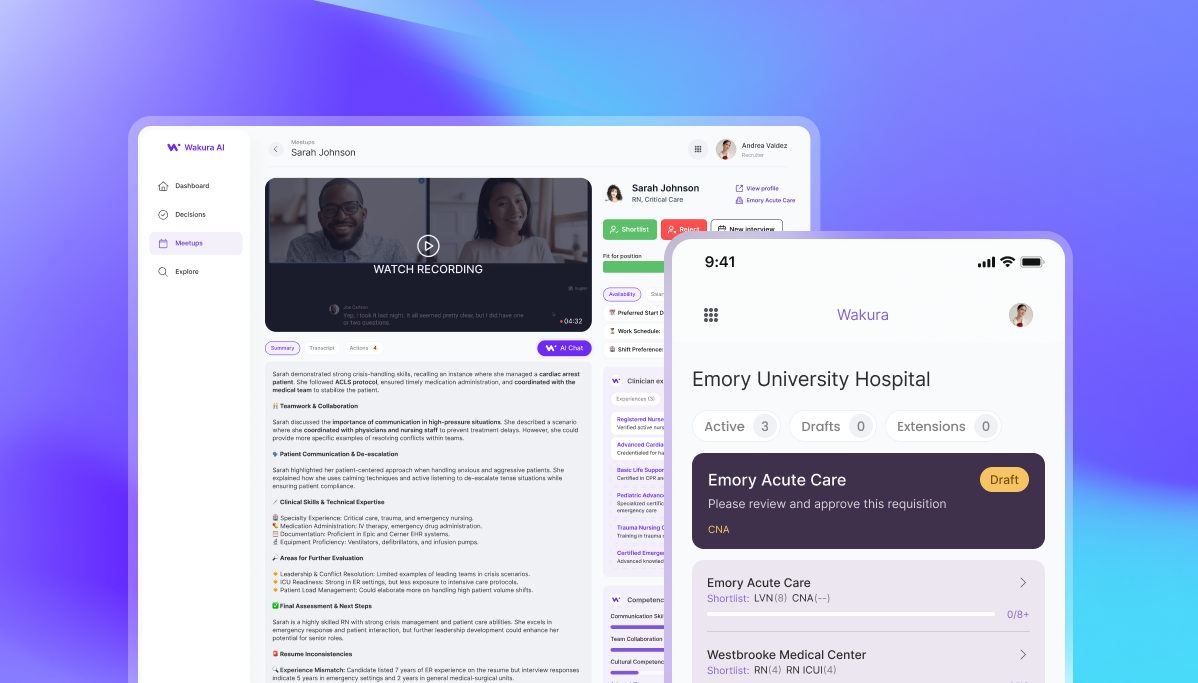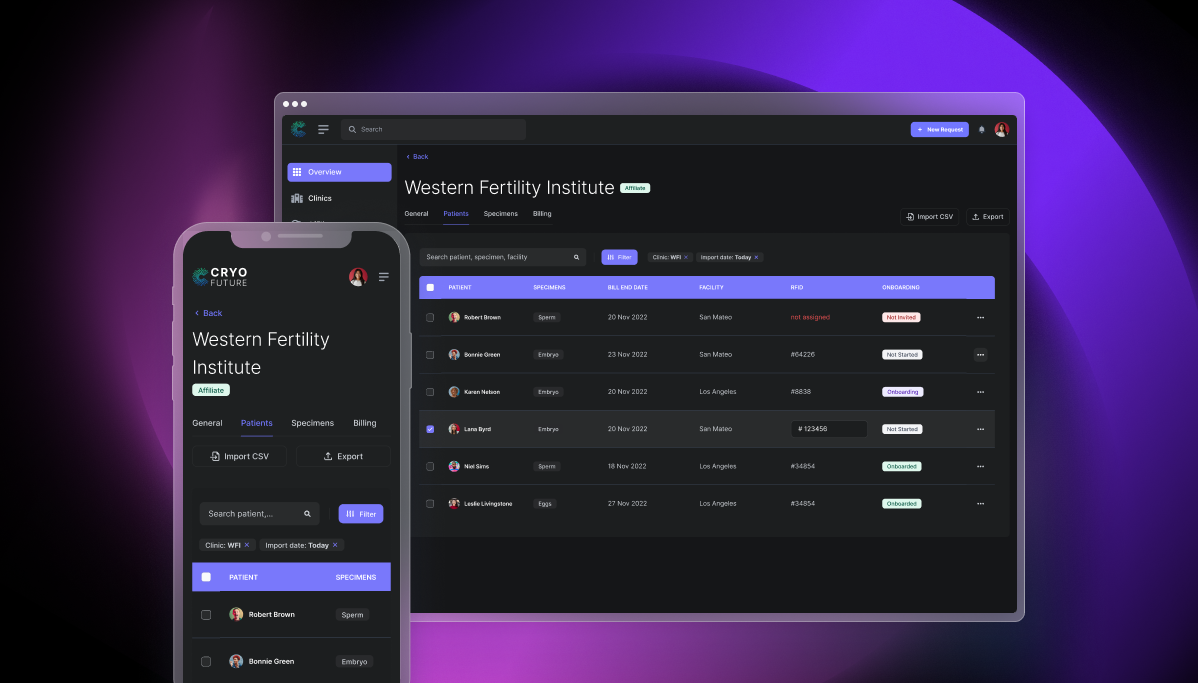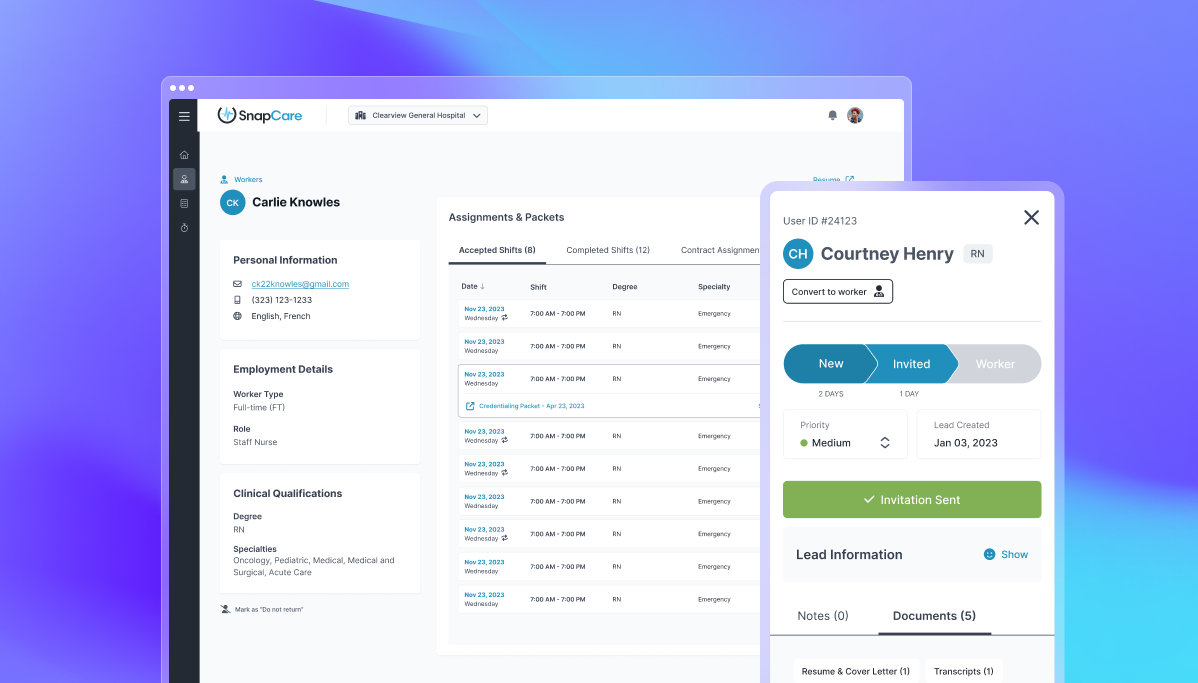Strategic AI Enablement for Product Teams
Artificial intelligence is transforming how we work, create, and interact with technology. But at Preux, we believe the future of AI isn’t about replacing people — it’s about empowering them.
We design and build intelligent systems for forward-looking companies. From AI-powered platforms to AI-enabled development workflows, Preux helps businesses harness the strategic value of artificial intelligence — thoughtfully, securely, and at scale.
Building AI-Enabled Products
At Preux, we build real platforms powered by artificial intelligence — not just prototypes nor static chatbots. Whether it’s real-time decision support, intelligent interview analysis, or prompt-based orchestration, our work makes AI operational.
We help our clients move beyond experimentation and bring AI into regulated, production-grade software systems.
Wakura AI: When AI Listens, Scores, and Advises
Wakura AI combines intelligent automation with real-time conversation analysis to transform healthcare recruitment. As a co-founding partner, Preux leads product strategy, UX, and delivery support to bring this AI-powered platform from concept to MVP.
The result is a recruiter co-pilot that doesn’t just respond — it thinks ahead:
Joins recruiter interviews in real-time
Scores candidate responses on soft skills and fit
Suggests follow-up questions dynamically
Surfaces submission recommendations and red-flag alerts
This isn’t a chatbot. It’s a proactive, voice-aware assistant — built to elevate human decision-making, not replace it.
Enabling Developers with AI
Every software team at Preux is augmented by AI tools. From GitHub Copilot and Claude 3.5 to internal prompt libraries and evaluation layers, our developers use AI to speed up delivery, improve code quality, and explore complex systems faster.
Preux doesn’t just build AI — we work with it, daily, to deliver for our clients.

AI in Action — Across Our Projects
Whether embedded into the platform or powering the delivery behind the scenes, AI plays an important and evolving role across our work.

Wakura AI: Redefining Talent Assessment in Healthcare with Conversational Intelligence
Wakura AI combines intelligent automation with real-time conversation analysis to transform healthcare recruitment. As a co-founding partner, Preux led product strategy, UX, and delivery support to bring this AI-powered platform

Powering a New Standard in Cryogenic Healthcare
CryoFuture partnered with Preux to architect a secure, compliant inventory platform for biological storage — including RFID-tracked cryotanks, patient-facing portals, and document workflows. Our scalable solution enabled national rollout and

Taking a Healthcare Startup from MVP to $1.8 Billion Revenue in 4 Years
SnapCare engaged Preux to lead UX strategy, interface design, and mobile development for its award-winning healthcare staffing platform. What began as an MVP evolved into a deeply embedded partnership, supporting
The Preux Product Development Lifecycle
1. Discovery & Scoping
2–3 weeks
We begin with alignment. Through collaborative workshops and technical mapping, we define your platform’s purpose, scope, user roles, and delivery risks. Whether you’re planning multilingual publishing tools, HIPAA-compliant workflows, PCI DSS-ready fintech platforms, or investor-facing dashboards, we bring clarity to complexity and turn goals into a structured delivery plan.
Architecture & UX Design
2–4 weeks
We design for the real world — for clinicians, editors, traders, and internal operators alike. This phase covers system architecture, wireframes, and user journey mapping. We create intuitive flows that respect regulatory context — from FCA-aligned UX and GDPR-conscious design to role-based permissions and localisation. The outcome: clickable prototypes and documentation that’s ready for build.
3. Core Build (MVP or V1)
2–4 months
With clear scope and structure, we execute fast—but without cutting corners. Using proven frameworks and optionally low-code tools, we deliver your first usable product with working authentication, core workflows, and clean UI aligned to your brand and user context. From clinician portals to media templates or financial dashboards, we launch real products, not static prototypes. Built for real users, not just investor decks.
4. Iterative Rollouts & Feedback Loops
Ongoing (monthly sprints)
We launch, learn, and refine. Once live, our embedded teams work in agile sprints — continuously improving based on user feedback, platform data, and evolving compliance. This phase often sees features like multi-role access, content tooling, payments, permissions, KYC/AML processes, analytics, and syndication logic come to life. Every release is designed to move the product forward without compromising system stability.
5. Growth & Scale Support
3–6+ months
We adapt as you grow. Whether that means scaling cloud infrastructure, adding integrations (like EHRs, CDNs, or analytics platforms), or phasing in QA, DevOps, and business analysts, we adjust the team to match your stage — not the other way around.
6. Long-Term Partnership & Innovation
Ongoing
Preux often becomes a long-term product partner, not just a delivery vendor. We embed with your team to support roadmaps, technical strategy, and innovation. Whether you’re expanding across regions, investor milestones, or user types — we stay aligned, stay consistent, and stay accountable.
Looking for a tech partner to help build your software?
Schedule a free call to discuss your needs:
- Product idea
- Business goals
- Development approach, tech stack, and team
- Budgets

Nicola
Client Manager

Eugene
Delivery Manager

Matthew
CEO
Prefer to send us a message?
We deliver structured, usable platforms — not just AI demos. Preux builds full product teams that can operate independently or under your direction, covering backend, frontend, UX, QA, and product delivery. Whether you’re building on GPT, Claude, or custom models, we ensure the AI is integrated, reliable, and user-facing — not just theoretical.
Yes. We often work with founders at the ideation stage — helping scope what should use AI (and what shouldn’t), shaping the platform around real user value, and delivering working MVPs that combine traditional logic with model outputs. We’ve helped clients structure demos, investor pitches, and first user onboarding.
Both. Most clients start with hosted APIs (like GPT, Claude, Cohere, or Mistral). We’ve built platforms with prompt injection controls, output validation, and model switching. If you’re moving toward custom ML or fine-tuning, we’ll work with your data team or help integrate your training pipeline into the product.
Typically 2–4 months. We focus on delivering usable software — with AI integrated into real user flows. That often includes prompt engineering, fallback logic, UI for model outputs, and admin tools for human oversight. If your product includes additional workflows or integrations, we’ll scope accordingly.
Yes. A big part of early scoping is identifying where AI adds value versus complexity. We help you define when to call the model, when to rely on deterministic logic, and how to build around uncertainty. That includes fallback pathways, confidence scoring, and user trust design.
We can continue iterating, provide retained support, or help transition to your in-house team. We support model refinement, user testing, post-launch rollout, and scaling. Some clients retain us for roadmap delivery; others keep us as a strategic partner while growing their own team.
We help with all of it. Our teams work on product definition, AI-human interaction design, prompt shaping, and usage strategy. We don’t treat the AI layer as a bolt-on — we design for usability, accuracy, explainability, and trust from the start.
We work on fixed monthly rates per role. You get experienced people, hand-picked for your project, working full-time or part-time. Transparent. Predictable. Aligned.
No — but many of our projects are AI-enabled. We’ve worked across healthtech, fintech, staffing, and search — where AI models are used for ranking, decision support, language processing, and structured predictions. We understand when to use AI — and when not to.
We can integrate directly — providing engineers, QA, UX, or PMs who align with your internal roadmap and standards. Some clients use us to lead; others plug us into their existing team. We’re comfortable operating under your direction or owning delivery when needed.